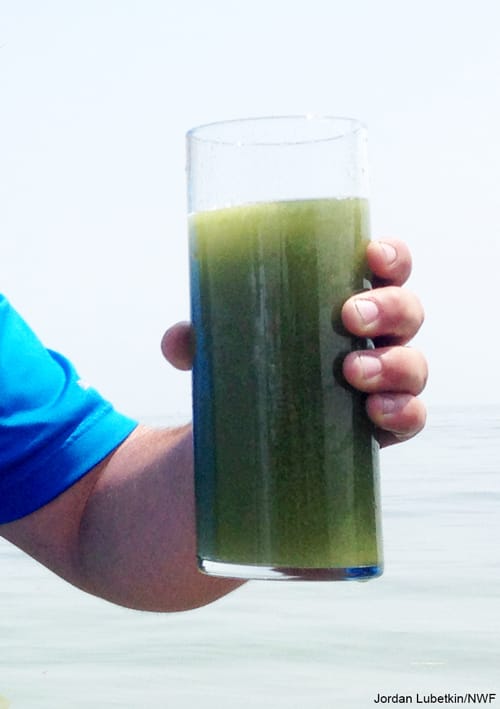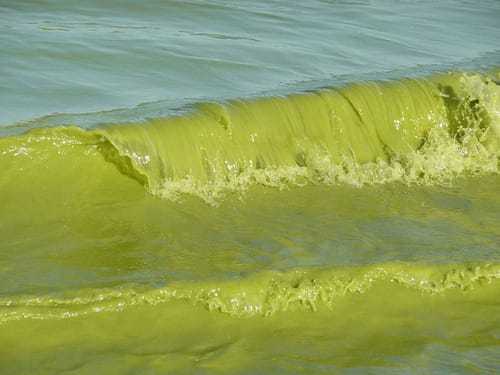Toledo Toxic Algae and Organic Lawn Care
by Alec McClennan, on August 7, 2014
It is absolutely stunning that Toledo, a city along the richest reserve of Fresh Water in America would be without water for 3 days. Here's what's going on in Lake Erie for those of you who don't live in Toledo. Does it look like something you'd like to drink?


It has been a sea of toxic green algae that makes the water unusable for drinking or bathing. Boiling it won't fix the problem either.
What Can We Do To Prevent Toxic Algae?
Algae grows when there are excess nutrients in the water to feed it. Many of the nutrients in the Toldeo area come from Farms and Sewage Treatment Plants that allow excess nutrients to runoff down the drains and into the Maumee River which ultimately dumps into Lake Erie. There is not much you can do to prevent farmers from using synthetic fertilizers and raw sewage on their fields (other than lobbying your representatives) but you can make some changes right in your own back yard. Click Here For More Info on How Synthetic Fertilizers Cause other problems in our water supply.
Buy Organic Food
Organic Food is not only better for you from a health standpoint, it is better for our water. Organic Farms do not use synthetic fertilizers and studies have shown that nutrient runoff from an organic farm is almost non existent.
How Chemical Lawn Care Leads to Toxic Algae
When you put down a synthetic chemical fertilizer, it is water soluble. This means that if it rains, it dissolves in the water completely. When it is in this dissolved state, the nutrients are very likely to wash into a storm drain and right into the nearest body of water. When thousands of people fertilize their lawns with synthetic chemical fertilizers, it leads to lots of excess nutrients being dumped into our water that feed algae and cause problems. Check out our cartoon that shows the differences between organic and synthetic fertilizers.
How Organic Lawn Care Prevents Toxic Algae
When you put down an organic lawn fertilizer, you are putting down proteins that are not water soluble and not mobile. That means that when it rains, it looks kind of like your grape nuts cereal do in milk, wet but not dissolved. Organic Fertilizers rely on beneficial soil organisms to decompose the proteins and turn them into plant food. This happens slowly over time and keeps the nutrients from leaching into the lake.
The Circle of Life
This is a little different Circle than the Lion King referenced, but events like this remind us about how what we do in our own lives can directly effect us. When we put down synthetic fertilizers it doesn't seem like a big deal, they're not even the poisonous part of a synthetic lawn care program (the insecticides, weed killers, and fungicides pose much more direct health issues) but the fertilizers can cause big problems when we go to our tap and try to drink some nice clean water. What we put out into the world, comes back to us.
So, we hope you make the choice to use an organic lawn care approach instead of a synthetic approach. If you really need to use the chemicals, please follow the directions, clean up your sidewalks after applications, and don't use any phosphorus. Just eliminating phosphorus won't solve the problem, but it's a step.
Here's to clean drinking water! Together, we can all make a big impact.












